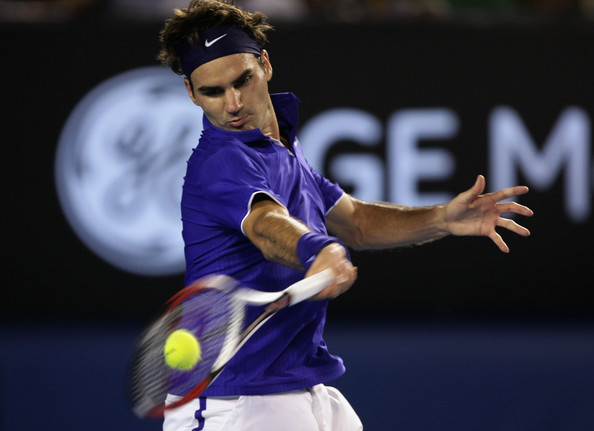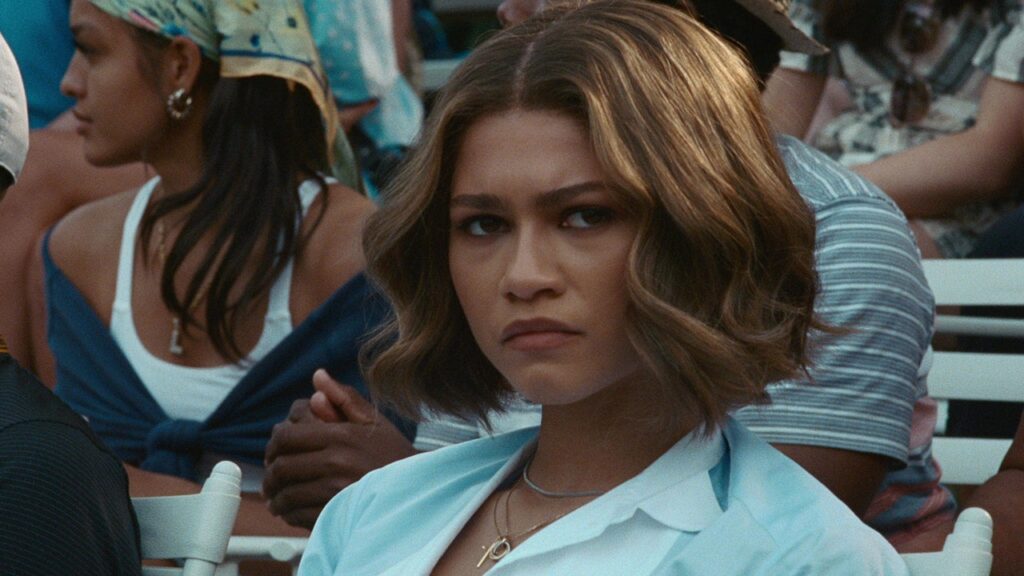Genre: Drama
Premise: Two aging tennis players who were once best friends play one final match under the watchful eye of the woman they both love.
About: The day has finally come. A tennis movie finished number 1 at the box office. Challengers beat the odds and topped the weekend with 15 million dollars. The writer is the husband of Celine Song, who recently wrote and directed the movie, Past Lives.
Writer: Justin Kuritzkes
Details: 131 minutes.

It’s been a while since I’ve gone to the theater so if there was a film that was going to get me there, it would have to be something personal, something I connected with on a deep level. And since I spent 15 years of my life chasing the dream of becoming a tennis champion, Challengers became that film.
Now, I’d already read the script, which you can check out my review of here. But it’d been long enough that I didn’t remember everything and could therefore go into the movie fresh.
So, did the movie live up to the script? Let’s find out.
For those who know nothing about the story, here’s a recap. 30-something tennis professionals Patrick and Art are playing in the final of a small professional tournament. We immediately learn that these two used to be best friends, but not anymore. Whereas Art has gone on to win several Grand Slam tournaments, Patrick is barely holding on to his 150 world ranking.
We cut back to the two in their teens when they used to be doubles partners. It’s there where they meet the young beautiful phenom, Tashi. The two corral Tashi into hanging out after a tournament and the three become fast friends (with tons of sexual tension). Tashi likes the more dangerous Patrick at first. But, over the years, as the flashbacks continue, she moves over to the safe (and more successful) Art, who she eventually marries.

After a career-ending injury, Tashi becomes Art’s coach and is one of the primary reasons he wins so many tournaments. But the truth is, Tashi hates her husband. She still pines for Patrick. But the problem is, she hates him too. Tashi believes that if her husband can beat Patrick in this final, he could win one last grand slam. But there’s a problem. Art has never beaten Patrick. And Patrick wants to keep it that way.
*****INSIDE NERDY TENNIS RANT BEGINS HERE*****
If you want to fast-forward to my thoughts on the actual characters, plot, and story, I’ve denoted below where this rant ends. But I cannot, in good conscience, not comment on the tennis in the movie. So let’s go at it.
My first thought when I saw the actors playing was: They look better than I expected. Their strokes were clean. Their form was good. You can always tell a good tennis player because they extend their racket out through the ball as far as their body will allow them. Amateur players have shorter hackier swings. So they obviously had some good coaching to teach them how to swing correctly.
When Elad and I were discussing how to make the actors in Court 17 look like tennis players, we realized that the only way we could possibly accomplish this was by inserting the actors’ heads on the bodies of real professional players via digital replacement. Cause we both agreed that, even in the best case scenario, where we’d get Ryan Gosling to play the lead (the lead was originally a man), we couldn’t make him look like 1/10th of a professional player even if we coached him 4 hours a day for six months.
So I was impressed by the fact that all three actors in Challengers, for the most part, swung the racket well. I was particularly impressed by Zendaya’s footwork. A tennis player’s footwork is a series of short quick intense bursts. It’s so fast. And her footwork was shockingly good.

But I quickly noticed what I feared going into the movie. Which is that they weren’t using real tennis balls. Instead, they had the actors run around and swing their rackets at imaginary balls then added the balls in digitally later. From a filming perspective, I know why they did this.
When teaching tennis, one of the things you do is you stand next to the player and take them through the tennis stroke. You show them the beginning (racket back), middle (extend out through the ball), and end (follow through). If you do this enough times with the student, you can make their swing look pretty close to a professional swing.
However, the second – AND I MEAN THE SECOND – you introduce a ball into the equation, THEIR ENTIRE SWING FALLS APART. And I’m not talking just a little bit. I’m talking, imagine a deer gliding through the forest. Now imagine a three-legged pig stumbling through that same forest, bouncing off trees and rolling around half the time. That’s the equivalent of a student swing without and with a ball. That’s because, once a ball is introduced, all the student cares about is hitting the ball. They don’t care about the swing anymore.
This is why they did it this way in Challengers. If you’re not going to use body doubles, you have to have them swinging at nothing. Cause once they start swinging at real balls, they’ll look like hacks.
But here’s why not having actual balls when filming hurts the tennis. If you watch
Zendaya swing in this movie, she does something NO PROFESSIONAL PLAYER WOULD EVER DO. Which is she NEVER LOOKS AT THE BALL. She just swings while staring forward.
 Note where Federer’s eyes are at contact point.
Note where Federer’s eyes are at contact point.
It looks bizarre to real tennis players because you can’t hit a ball you’re not looking at. And the whole reason she’s not looking at the ball IS BECAUSE THERE NEVER WAS A BALL. They just told the players to run and swing at nothing.
 Zendaya contact point.
Zendaya contact point.
This issue was so distracting, I couldn’t stop thinking about it while I was watching the film. I kept imagining calling Luca Guadagnino and explaining to him this mistake and how he should’ve done more test footage and had real tennis players watch it so they could’ve pointed it out and corrected it. But, eventually, once I accepted that I was never going to have this conversation, I moved on and just focused on the movie.
*****INSIDE NERDY TENNIS RANT ENDS*****
Okay, let’s chat about the actual film. I had the exact same experience with the movie as I did the screenplay. I didn’t like the first hour of the movie. For starters, it was extremely homoerotic for no other reason than the whims of the director. At times I thought I was at the STUDS theater on Santa Monica Boulevard in West Hollywood.
I wasn’t interested in the main match either. I didn’t understand why I should care about two old friends trying to win this tiny tennis tournament.
But what the movie does really well (and the script did the same thing) is it uses its flashbacks to give the viewer more information about the characters. And that information always relates back to the match being played in the present.
So, for example, in one flashback, we might find out that Patrick slept with Tashi at a tournament two years ago. Therefore, when we come back to the present-day match we see the points a little differently. There’s added subtext to the battle. Or (small spoiler), in another flashback, Tashi asks Patrick to throw the match. So when we jump to the game, we have THAT extra detail in our head. Is Patrick going to throw the match or isn’t he?

One of the things that annoys me so much about flashbacks in screenplays is that they take more than they give. They stop all story momentum to go backwards. You are TAKING from the reader whenever you do that. Sure, flashbacks often give us details about the characters but the details are never interesting enough to warrant stopping the main story for.
Challengers shows you how to do it right. Every flashback gives us RELEVANT information about the characters that CHANGES THE WAY we experience their finals match. That part of the script works so well that by the time we get to the end of the movie, I was on pins and needles. I had no idea who was going to win and I wanted to know.
This movie is so strange. It has so many quirks, so many times, early on, where it isn’t working. But somehow it manages to overcome all its weaknesses to put it together at the end. And I think its success is due to one single word. STAKES.
This movie is all about stakes. There are no stakes at the beginning. We don’t care about the match. But the more we learn about the characters, the more we learn that this match means EVERYTHING to each of these players. This script really reminded me about the power of beefing up the big events in your story by adding to the “all or nothing” recipe of that event. The more that’s riding on that battle, the more the reader cares. So for that reason, I think this movie’s worth checking out. As long as you’re prepared for churro-penis metaphors, you’re going to love it.
[ ] What the hell did I just watch?
[ ] wasn’t for me
[x] worth the price of admission
[ ] impressive
[ ] genius
What I learned: The importance of setups and payoffs in your climax. So, in big Hollywood movie climaxes, they keep the audience’s attention with spectacle. But in drama, you have to be more clever because you don’t have spectacle. The best way to make up for that is with a killer PAYOFF to a SETUP you used earlier in the movie. So here, in Challengers, there’s a scene when they’re teenagers and they’re playing and they’re joking around about if Patrick slept with Tashi or not. And Art says, “If you slept with her, put the ball right on the throat of your racket when you serve. If not, use your regular service motion.” And they build the suspense of Patrick prepping to serve. Finally, right before he serves, he puts the ball on the racket confirming that he slept with her and they both have a laugh about it. — Cut to 20 years later, the night before the finals match, and (big spoiler) Patrick has sex with Tashi. Then, the next day in the final match, in the third set, the score is tied. Patrick goes up to serve and… as Art is preparing to return… Patrick moves the ball to the throat of his racket (conveying that he just slept with Art’s wife). It’s a well done payoff that hits with the impact of Thor’s hammer. And that’s it. That’s all you need to do in your low-budget movie climax to compete with the big boys who have all that spectacle money.

